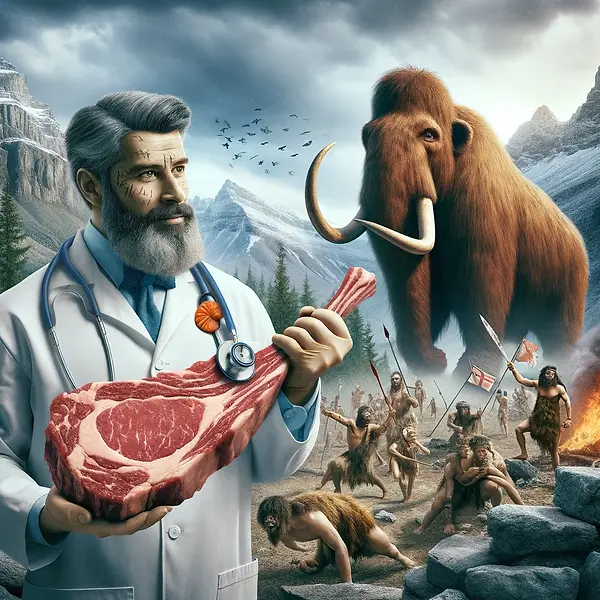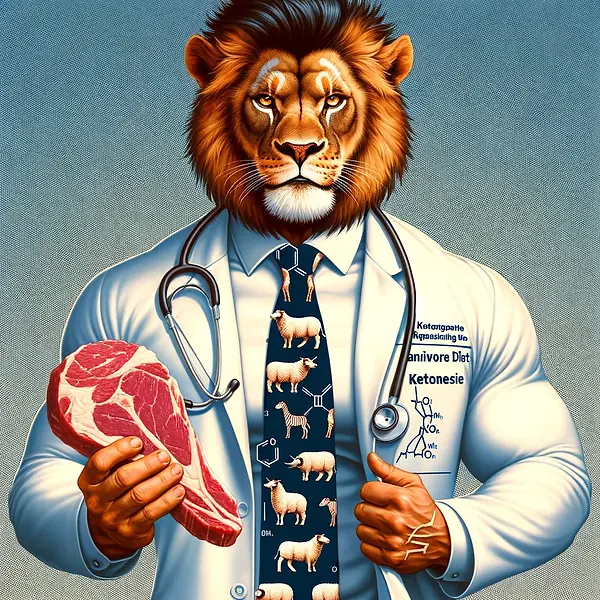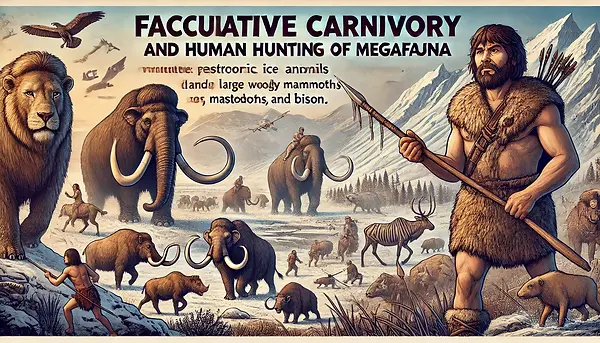
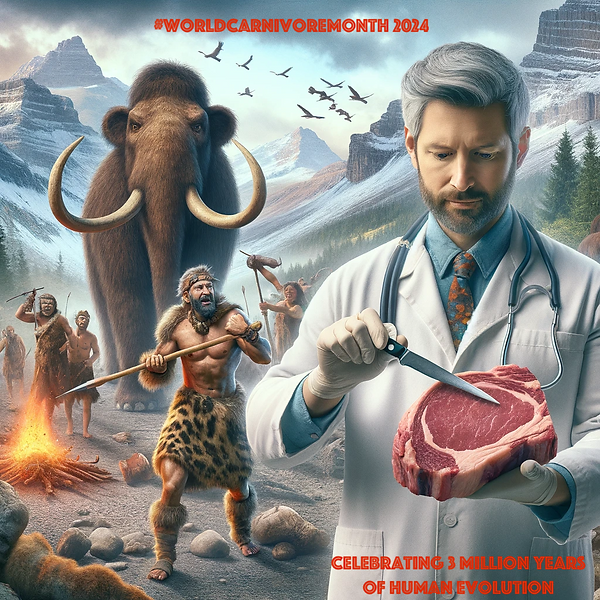
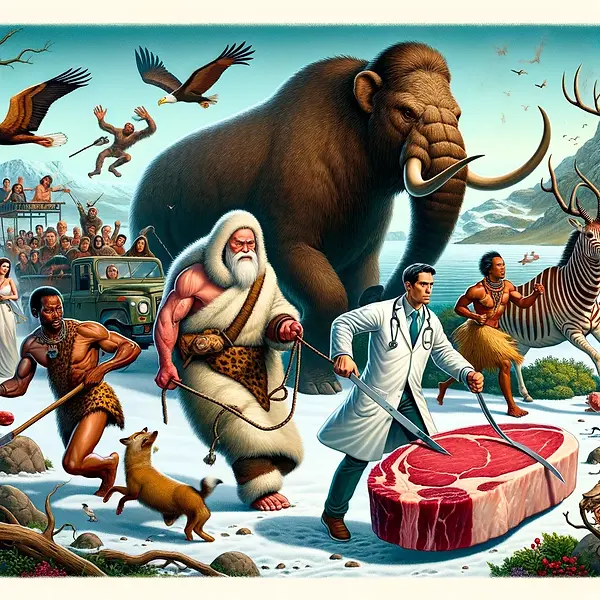
Title:
A Cross-species Analysis of Carnivore, Primate, and Hominid Behaviour
Abstract:
The traditional assumption that the origin of human behavior is found within the higher primates rather than the social carnivores is based on failure to adequately define primate and carnivore behavior. Phyletic classification takes no account of convergence and divergence; the behavior of a species is not necessarily characteristic of its order. Of 8 behavior variables that distinguish the order primates from the order carnivora, preagricultural man resembles the carnivores on 7 items: food sharing, food storing, cannibalism, surplus killing, interspecies intolerance, feeding of young, and division of labor; resembling the order primates only in group defense. The original form ofmuch human behavior is found within the carnivores.
Details
1. Introduction
In attempting to deduce the origin and evolution of human behavior, anthropologists have frequently looked to the nonhuman primates for clues. Some evidence has also been offered for the relevance of terrestrial carnivores because of common evolution as a hunter (Dart, 1953; Ardrey, 1961; Schaller & Lowther, 1969). Both approaches have usually provided lists of similarities between human behavior and the behavior of a particular species. But lists of similarities between species, however long, are only a partial answer. Individual species behavior can vary drastically as a result of divergence and convergence. Primate behavior is behavior which characterizes the order primates; carnivore behavior is behavior which characterizes the order carnivora. When comparisons are made at a specific level ambiguities result. For example, Teleki (1973) compares the predatory behavior of chimpanzees with human hunting as evidence for deriving this behavior from the primates. However, the predatory behavior of chimpanzees is not characteristic of species in the order primates, but is in fact deviant. A more likely theory is that chimpanzees and hominids are both converging with terrestrial carnivores and have acquired their similar behavior through convergence on a common niche. The central thesis of this study is that there is incontrovertible evidence of the convergence of human behavior with carnivore behavior.
2. Methodology
The approach outlined above uses the following procedures. A hypothesis is proposed as to which of two paired behaviors is characteristic of carnivores. Each hypothesis is posed in such a manner that one of two variabIes is presumed to be causal; i.e. one variable is presumed to be independent, one dependent. The independent variable used throughout this study is taxonomic inclusion within the order carnivora and order primates. Since the dependent behavior variable is also a dichotomy, usually A and .& the reIationship of the two variables is expressed in a 2 x 2 contingency table. A hypothesis is considered confirmed if more carnivore species exhibit A' than A and more primate species exhibit A than A and the probability that this relationship could have occurred by chance alone is less than 0.05. Because more primate and carnivore species are known biologically than behaviorally, it is not possible to select a random sample of species within these orders for study. Instead, a representative sample of primate and carnivore species was selected. Table 1 gives these species with their references. There is a noticeable bias in the sample toward higher species in the orders. This is because the study deals with convergent and parallel behaviors and these are more likely to be associated with advanced species than primitive ones. This bias limits the universe to which the findingj may be legitimately generalized, which becomes the primate families Cebidae, Cercopithecidae, Hylobatidae, and Pongidae, and the carnivore families Canidae, Hyaenidae, and Felidae. The family Colobidae is probably not adequately represented by its one species, Colobus guereza. The variables selected were ones that were mentioned in the literature dealing with naturalistic behavior of carnivores and primates, were available in the field studies of the sample species, and could be formulated in a manner suitable for dichotomous classification. Since the statistics used in this study operate most efficiently when variables are dichotomized close to the median, a characteristic was also required to be present in at least 20 % of the species in a 2 x 2 table.
3. Carnivores and Primates at the First Level of Abstraction
Diet
Meat is a high calorie food relative to vegetal matter, requiring less bulk consumption. Meat eaters often share food among themselves; herbivores do not, since the calorie content is so low the effort is scarcely justified. Even in carnivores which exist as solitary adults, except for brief periods of mating, food is shared between a mother and her young. Moreover, a carnivorous diet requires a highly developed weapon system to hold and kilI prey. A carnivore must capture his food by careful stalk or long chase; the food of a herbivore cannot escape. Sharing of food acquired only with difficulty could be instrumental in maintaining sick or immature animals in carnivora, much less so in primates. Given the practice needed for successful capture of prey, it is doubtful that the young of predators could survive if they were not allowed to feed from the kills of aduits well after being weaned. With the exception of the chimpanzee and Savannah baboon, which on occasions kill and eat smaller mammals, the primates are noncarnivorous and even in the chimpanzee and baboons meat eating represents only an infrequent supplement to a basic vegetarian diet (Teleki, 1973). These observations can be phrased into hypothesis form. Meat has both higher calorie value than vegetal matter and requires more skill to obtain, therefore it would be adaptive for meat eaters to share food within their social group, whereas primates, being vegetarian, would find the abundant supply of vegetal matter makes sharing unnecessary and the bulk of comparable vegetal calories makes it very difficult. Table 2 shows that food sharing is significantly positively correlated with carnivores (# = 0.92, xa = 17.72, P < O-001). The only primate to share food is the chimpanzee, and it shares food only when it is meat (Teleki, 1973). Carnivores also diverge from primates in food storing. Leopards frequently suspend their kills in trees to keep them from hyenas and return for them later; hyenas submerge kills in water; lions drag kills into thickets; and foxes bury them. There are no comparable instances of caching food among primates. A second hypothesis on primate and carnivore behavior is thus offered in food storing. Since meat is difficult to procure and relatively compact, carnivores would evolve methods of storing it; however, for primates to store bulky vegetal matter would be difficult and of doubtful adaptive value given the easy access. Table 3 shows food storing is positively correlated with carnivores (4 = 0.85, xe = 14.52, P < O-001). The two exceptions, cheetah and wild dog, share the highest hunting success rate. Among primates, cannibalism is nonexistent. However, it does occur among carnivores, although the factors which trigger it remain unknown and its occurrence is less frequent than pure opportunism predicts. Nevertheless, it can be hypothesized that cannibalism is associated with carnivorism.
Table 4 shows cannibalism is positively correlated with carnivorism (r$ = 0.77, x2 = 11.81, P < 0.001).
Interspecies aggression
During the Pleistocene, preagricultural man hunted a huge number of large mammals into extinction. Martin (1967) calling the phenomenon “Pleistocene Overkill,” estimated the loss at 200 genera. Some evidence strongly suggests that other predators are capable of hunting prey to extinction. Kruuk (1972) using the term “surplus killing” described how 19 hyenas took advantage of a dark night with heavy rain to kill or badly injure 109 Thompson’s gazelle, eating only 13 of 59 dead ones. There was no evidence of selection for healthy or mature animals. In commenting on a fox which had killed 239 gulls during a night storm, Tinbergen & Ennion (1967) stated that “a fox must have an ingrained habit to kill on sight because, clearly in lean times it cannot afford to lose the chance of a meal by hestitating even for a split second.” The following hypothesis is suggested by these observations. Surplus killing is a characteristic of carnivores.
Table 5 shows surplus killing is positively correlated with carnivores (o = 0.77, X* = 11.81, P < 0.001). Among primates there is little evidence, exclusive of natural enemies, of interspecific aggression. Primates are tolerant of other species (nonpredators) and even derive benefits from coexistence by using other species communication signals to warn them of approaching predators they have themselves not yet detected (Sarel & DeVore, 1965). Among carnivores there is, in addition to predator-prey aggression, a general animosity toward other carnivores. Lions make unprovoked attacks on leopards and cheetahs and kill them (Schaller, 1972). Wild dogs have attacked lions and tigers and eaten them (Schaller, 1968, 1972). Kruuk (1972) reports that lions account for 55 ‘A of hyena mortality. Relations are similar in the New World. Schaller & Lowther (1969) believe this intracarnivore intolerance is the result of competition for the same food resource, particularly the tendency of predators to usurp one another’s kills. The following hypothesis is thus offered. Carnivores manifest interspecific aggression not related to predator-prey; primates manifest no aggression other than predator-prey.
Table 6 shows that nonpredator-prey mortal interspecies aggression is positively correlated with carnivores (q5 = 0.86, X* = 14.86, P < 0.001). The chimpanzee and Savannah baboon will prey on other primates, but even this hostility has not caused a complete intolerance. Teleki (1973) reports that even baboon troops that have experienced losses to predatory chimpanzees commonly allow these same chimpanzees to pass among them. Therefore, there is some doubt that the above hypothesis has any exceptions at all. The traditional enmity between cat and dog is as apparent in the largest carnivores as it is between tabby cat and village cur.
Group defense
In baboons and macaques the males have evolved large canines to defend the troop against predators, while the canines of the females are by comparison much more modest and are not typically used in troop defense. Male-dominant defense occurs in other primates as well, but is scarce in carnivores. Carnivores need to maximize the number of food providers and for that function a male is as useful as a female, the lion being a notable exception. Nonhuman primates lack a scarce food supply and their social system often contains harems, similar to those found in ungulates species which are commonly preyed upon. The following hypothesis is thus suggested. It is adaptive for nonhuman primates to raise the maximum number of young, for which the role of the female is more active than that of the male; it is adaptive for carnivores to maximize the number of food providers, and for that there is no sexual difference. Therefore, males are more expendable for group defense in primates, but not in carnivores.
Table 7 shows that males are used more for group defense in primates than in carnivores ($ = O-58, xa = 6.43, P < 0.025). The male lion assumes the primary burden for pride defense because the lioness assumes the primary burden for pride economy (Schaller, 1972). Lions are, therefore, a dubious exception. Feeding of young The young of solitary carnivores are entirely dependent on their mother. The young of social carnivores and primates get some added care from other adults, except in feeding. Carnivore young are vulnerable to the feast or famine economy of a hunter; primate young are not. Consequently, it can be hypothesized that carnivores would minimize the severity of lean seasons by dividing the feeding of young among more than one adult whenever possible, whereas primate young would be dependent wholly on their mother. Since multiple-adult feeding of young depends logically rather than empirically on the presence of two or more adults, only social species will be considered.
Table 8 shows that among social species multiple-adult feeding of young is positively correlated with carnivores (o = 0.86, P < 0.001, using Fisher’s exact test). For wolves, wild dogs, and jackals multiple-adult feeding includes both sexes, who will carry food in pieces or regurgitate it to den young. Male lions will not feed pride cubs, but lionesses feed and suckle cubs communally. For hyenas, cannibalistic tendencies of stranger hyenas are probably responsible for delegating feeding young wholly to their mother and, according to Kruuk (1972), making the females bigger and stronger than the males.
4. The Carnivore Sophistication Scale and The Evolution of Hominid Behavior
Seven variables dealing with carnivore and primate behavior have been described in the previous section. For each variable a theoretical argument was derived, based when possible on existing literature on carnivore and primate behavior. The hypothesis resulting from theoretical argument was tested, using taxonomic affinity within the order carnivora and order primates as the independent variable and a behavior dichotomy as the dependent variable. The findings of this analysis are presented in Table 9. The similarity and dissimilarity of hominid behavior to carnivore and primate behavior can now be established by comparison matching. Table 9 shows that preagricultural man resembles the carnivores in food sharing, food storing, cannibalism, surplus killing, interspecies intolerance, and feeding of young. Only the male-dominant group defense of preagricultural man resembles the primates.
A scale of carnivore sophistication was constructed from the characteristics listed in Table 9. For a behavior variable to be included in this scale it must meet two criteria: first, the behavior had to be associated with the order carnivora. Second, the behavior had to be solely dependent on the independent variable; i.e. a variable was not included if it was confounded with two or more independent variables. Thus, solitary carnivores were not coded for multiple-adult feeding of young because this variable couId as likely depend on their social structure which lacks two or more adults as on their classification as carnivores.
The degree of carnivore sophistication of any species is computed by totaling the number of characteristics which are listed under carnivore then dividing this number by the total number of behaviors which are reported for that species. In this analysis social species have seven variables and solitary species six. For the example of preagricultural man this statistic is + or O-86. Since each behavior variable used to construct this scale is associated with order carnivora, it is expected that high scores should be carnivores and low scores primates. This expectation can be formulated as a testabIe hypothesis. The higher the carnivore sophistication score the more likely the animal is classified as a carnivore. Table 10 shows that this prediction is strongly confirmed (rDb = O-94, t = 13.38, P < 0*0005). The validity of this scale as a continuous measure of carnivore characteristics can also be verified by using it as the independent variable to test a hypothesis about carnivore and primate behavior, e.g. one for which the x2 cannot be used owing to low marginal frequency.
The young of carnivores and primates are born largely helpless and would die without care from their mother. The smaller home ranges and more restricted mobility of primates allows the adults to keep the young with them at all times. The larger home ranges and greater mobility of solitary carnivores often results in leaving the young unprotected while the mother hunts, jeopardizing their safety to no mean extent. Some social carnivores have evolved mechanisms to cope with this dilemma. Schaller (1972) argued that group existence in the lion made possible a division of labor not available to solitary cats. A lioness often serves as a guard for small cubs while others hunt. One pride lion may protect a carcass while others fetch cubs. Kuhme (1965) reports that some wild dogs guard the den while others hunt. The following hypothesis is offered. Lesser mobility allows primates to guard their young at all times; greater mobility means social carnivores can guard their young at all times only by performing two tasks concurrently, calling for a division of labor. Three species manifest such a division of labor: lions 0.86, wild dogs 0.57, and preagricultural man 0.86. The mean carnivore sophistication score of this group is significantly greater than the mean carnivore sophistication score of all social species without a division of labor (rsb = O-52, t = 2.59, P < O-01). The male-dominant group defense has been retained in hominid evolution despite a general divergence from the primates. The reason might be attributed to the characteristics that are associated with it. In preagricultural man, the male dominant defense is present with the division of labor in which men serve as hunters and women as gatherers. The division of labor is associated with carnivore Lophistication, therefore the male-dominant defense may have been retained because it is associated with the adaptive division of labor. Since behavior itself does not fossilize, it is difficult to know how early in hominid evolution the behavior exhibited by preagricultural man was attained. However, Dart (1959) reports cannibalism and intraspecific intolerance (against contemporary carnivores) among fossil australopithecines at Taung, Sterkfontein, Makapan, and Makapansagat sites : “with early universal cannibalism . . . habit . . , this common bloodlust differentiator, this predacious separates man dietetically from his anthropoidal relatives and allies him rather with the deadliest of Carnivora” (Raymond A. Dart, 1953).
I am grateful to Dr J. E. King and Dr C. A. Rogers for their critical reading of the manuscript.
Hypothesis:
Preagricultural man resembles the carnivores on 7 items: food sharing, food storing, cannibalism, surplus killing, interspecies intolerance, feeding of young, and division of labor; resembling the order primates only in group defense. The original form of much human behavior is found within the carnivores.

